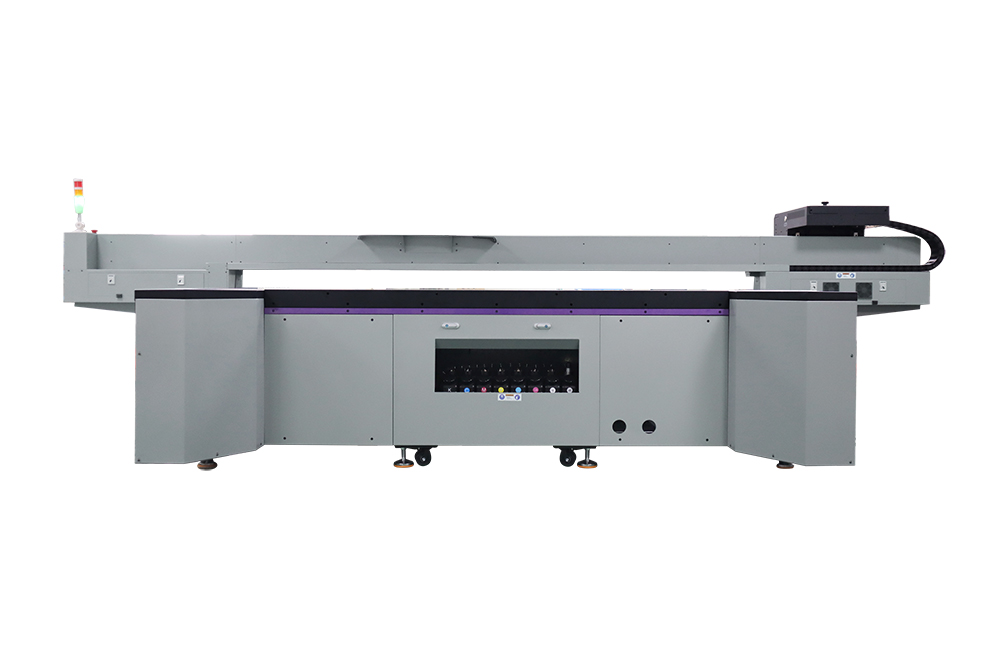UV Flatbed Printer: The Role of Print Profiles
In the realm of digital printing, where vibrant colors and intricate details define success, the UV flatbed printer has emerged as a cornerstone technology. Capable of printing on a diverse array of substrates—from rigid plastics and metals to flexible fabrics and wood—UV flatbed printers have revolutionized industries such as signage, décor, and manufacturing. Yet, beneath their impressive capabilities lies a critical component often overlooked by end-users: print profiles. These digital blueprints are the unsung heroes of achieving consistent, high-quality prints. This blog delves into the pivotal role of print profiles in UV flatbed printing, exploring how they bridge the gap between design intent and tangible output.

Understanding Print Profiles: The Digital Blueprint of Color Management
At its core, a print profile is a set of instructions that tells a printer how to interpret and reproduce colors. Think of it as a recipe: just as a chef follows a precise list of ingredients and steps to create a dish, a printer relies on a print profile to transform digital design files into physical prints. These profiles are generated through rigorous calibration processes, where printers analyze how different colors and materials respond to UV ink and light. The result? A standardized reference that ensures colors appear as intended, regardless of the substrate or printer model.
For UV flatbed printers, print profiles are particularly vital due to the technology’s versatility. Unlike traditional printers designed for specific materials, UV flatbed printers can handle everything from glossy acrylics to matte cardboard. Each substrate absorbs and reflects light differently, which can skew colors if not accounted for. Print profiles address this by compensating for these variations, ensuring that a vivid red on plastic looks the same as a vivid red on metal.
The Science Behind Print Profiles: Colorimetry and Calibration
The creation of print profiles is rooted in colorimetry, the science of measuring color. Specialized devices, such as spectrophotometers, analyze how light interacts with ink and substrates. By capturing this data, printers can generate profiles that account for factors like color gamut (the range of reproducible colors), density (ink coverage), and dot gain (how ink spreads on a surface).
For UV flatbed printers, this process is even more nuanced. The UV curing process—where ink hardens instantly under ultraviolet light—can introduce variables like ink viscosity and curing speed. Print profiles must factor in these dynamics to prevent issues like banding (uneven ink application) or color shifts. Without accurate profiles, printers risk producing outputs that deviate from the original design, leading to wasted materials and customer dissatisfaction.
Print Profiles in Action: Real-World Applications
The impact of print profiles becomes evident in industries where precision is non-negotiable. In signage, for instance, a vibrant storefront banner must match a brand’s corporate colors exactly. A misaligned profile could result in a blue that looks greenish or a red that appears dull, undermining the brand’s visual identity. Similarly, in automotive manufacturing, where UV flatbed printers are used to apply decals and coatings, profiles ensure that colors remain consistent across batches, even when printing on different materials like plastic or carbon fiber.
Another example lies in the world of interior décor. Imagine a hotel chain seeking to replicate a specific wood grain pattern across multiple locations. Without print profiles, the texture and hue of the print could vary from one printer to the next, disrupting the intended aesthetic. By leveraging profiles, printers can achieve seamless consistency, transforming digital designs into flawless physical replicas.
Overcoming Challenges: The Role of Human Expertise
While print profiles are a powerful tool, their effectiveness hinges on human expertise. Generating accurate profiles requires specialized knowledge of color theory, printer mechanics, and calibration techniques. Even the most sophisticated profile won’t yield results if the operator fails to account for environmental factors like temperature and humidity, which can affect ink behavior.
Moreover, print profiles must be regularly updated. As printers age or ink formulations change, profiles may need recalibration to maintain accuracy. This ongoing maintenance underscores the importance of partnering with experienced technicians who understand the nuances of UV flatbed printing. Without such oversight, printers risk relying on outdated profiles that compromise output quality.
The Future of Print Profiles: Innovation and Accessibility
As UV flatbed printing technology evolves, so too do print profiles. Advancements in artificial intelligence (AI) and machine learning are paving the way for more dynamic profiles that adapt to real-time conditions. For example, some printers now use AI to analyze substrate properties mid-print, automatically adjusting ink flow and curing parameters to optimize color accuracy.
On the accessibility front, cloud-based profile management systems are emerging as a game-changer. These platforms allow operators to store, share, and update profiles remotely, streamlining workflows and reducing the risk of human error. As a result, even small businesses can now leverage advanced profiling techniques previously reserved for large-scale operations.
Conclusion: Empowering Precision in Print
In the fast-paced world of digital printing, where deadlines loom large and customer expectations soar, print profiles stand as a silent guardian of quality. For UV flatbed printers, these digital blueprints are not just a technicality—they are the foundation upon which consistent, vibrant prints are built. By understanding the role of print profiles and investing in their proper creation and maintenance, businesses can unlock the full potential of UV flatbed technology, transforming designs into reality with unparalleled precision.
As the industry continues to innovate, one thing remains clear: print profiles will remain at the forefront of the printing revolution, ensuring that every print tells a story—not just of design, but of technical excellence.
